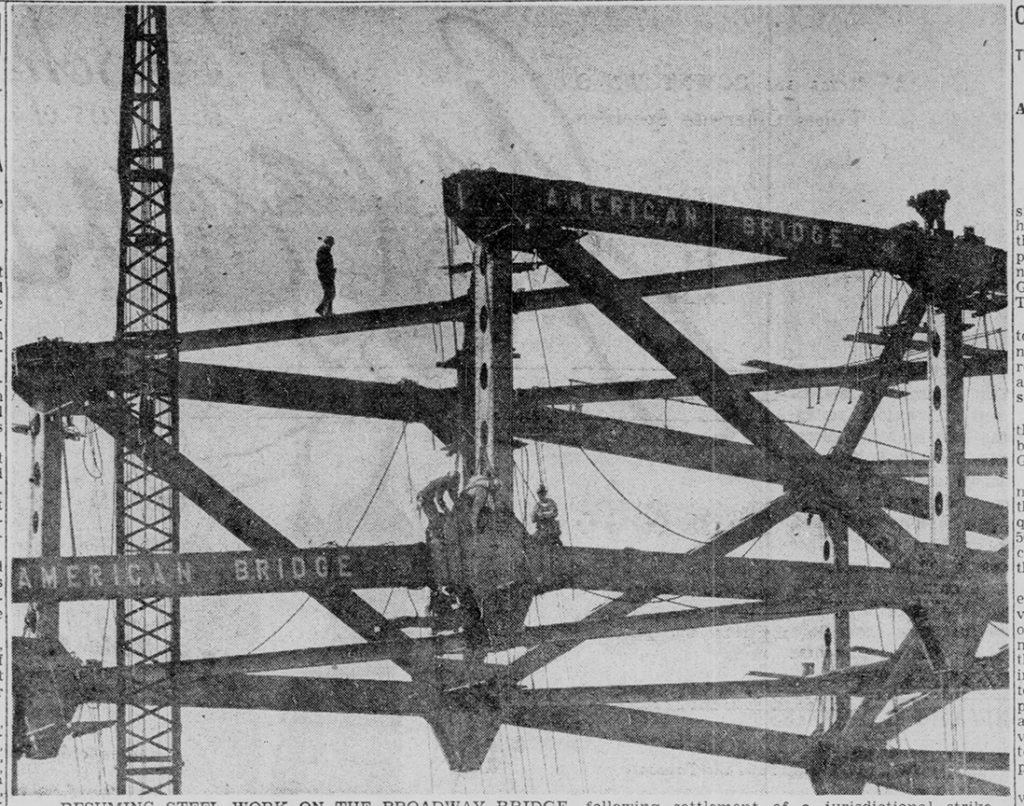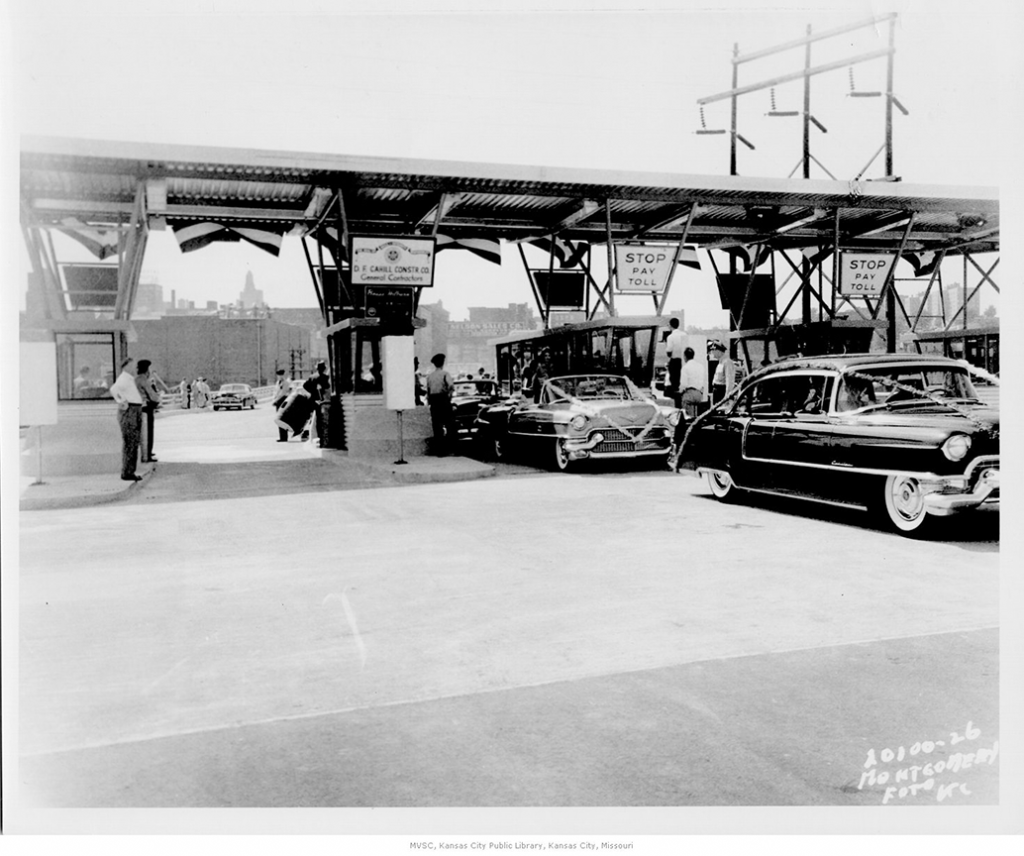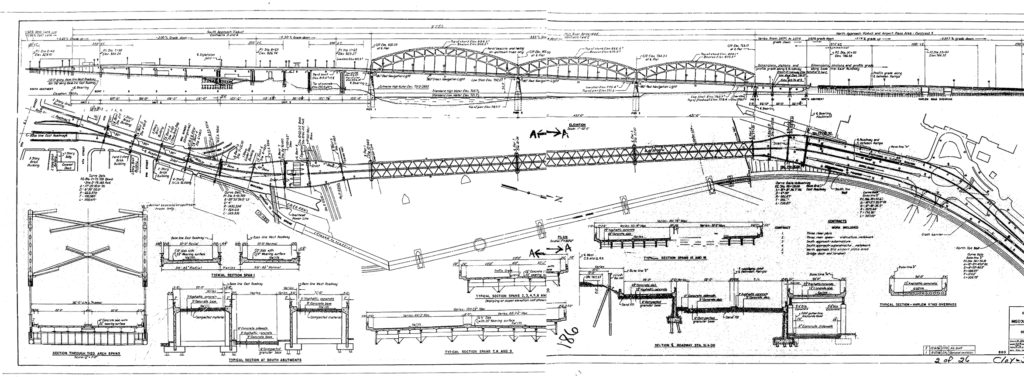
This week’s historic postcard is a Chrome era Tetricolor postcard published by James Teterick of Kansas City, Mo. The written description on the back reads, “The old and the new”. On the left is the old Hannibal Bridge built in 1869. The first railroad bridge crossing over the Missouri River. On the right is the new, ultra-modern Broadway Bridge. Downtown Kansas City, Missouri can be seen in background.”
While the title of “old and new” may be correct, the construction date of the “old Hannibal Bridge” shown on the front of the card is incorrect. The Hannibal Bridge shown on this postcard was completed in 1917 as a replacement to the original Hannibal Bridge which opened on July 3, 1869.
The original Hannibal Bridge was designed by world-renowned engineer Octave Chanute and, at the time of its construction, was the first railroad bridge across the Missouri River. Its completion ultimately decided the fate of other river towns competing for the same river crossing, those being Leavenworth and Atchison, Kan., and St. Joseph, Mo.

By the mid-1910’s, however, the 1869 Hannibal Bridge was fast becoming obsolete. The growth of Kansas City and the advent of the automobile made it imperative that a new bridge across the Missouri be constructed.
At the time, construction of the ASB (Armour, Swift and Burlington) Bridge was stalled, leaving the partially constructed bridge piers standing in the middle of the river like massive stone monoliths. Growth of the city meant a substantial growth in rail traffic across the old Hannibal Bridge, as well as the Chouteau Bridge further east. To that end, an upgrade to the old bridge was needed.
The “new” Hannibal Bridge that opened in 1917 met this need, constructed with two levels, the upper portion designed for automobile traffic and the lower span designed for the railroad. The “new” Hannibal Bridge carried traffic on both levels for 39 years.

On September 9, 1956, Kansas City’s iconic Broadway Bridge opened to automobile traffic with much pomp and circumstance. Mayor H. Roe Bartle cut the ribbon on the 2,547-foot three-span tied arch bridge and a parade of highly decorated cars carrying local dignitaries cycled through the toll gates at the south end of the bridge. Cost of construction was roughly $12-million.
The modern, steel arch bridge was a replacement for the aging Hannibal Bridge just to the east that carried both rail and auto traffic across the Missouri River.
Motor vehicle traffic was carried on the top deck and rail traffic on the bottom deck. Upon the opening of the Broadway Bridge, vehicle traffic was transferred to the new bridge. The “new” Hannibal Bridge is still a main rail artery across the Missouri River.

The Broadway Bridge remained a toll bridge until 1991. The toll gates were removed, leaving a wide spot on the south end of the bridge. Toll takers would access their booths from a set of stairs that led to the ground below the bridge. It was not uncommon for downtown commuters to have favorite toll takers, often exchanging cards and gifts for special events and holidays.
On June 24, 2016, the Broadway Bridge was officially renamed the John “Buck” O’Neill Bridge honoring the iconic Negro League Baseball legend Buck O’Neill who played for the Kansas City Monarchs. Construction is under way for the bridge’s replacement, slated to open in 2024. What will happen to the historic three-span iron bridge remains to be seen.
Additional image credits:
Bridge framing, Schematics credit: Nathan Holth, HistoricBridges.org
Photo credit: Missouri Valley Special Collections, Kansas City Public Library

















